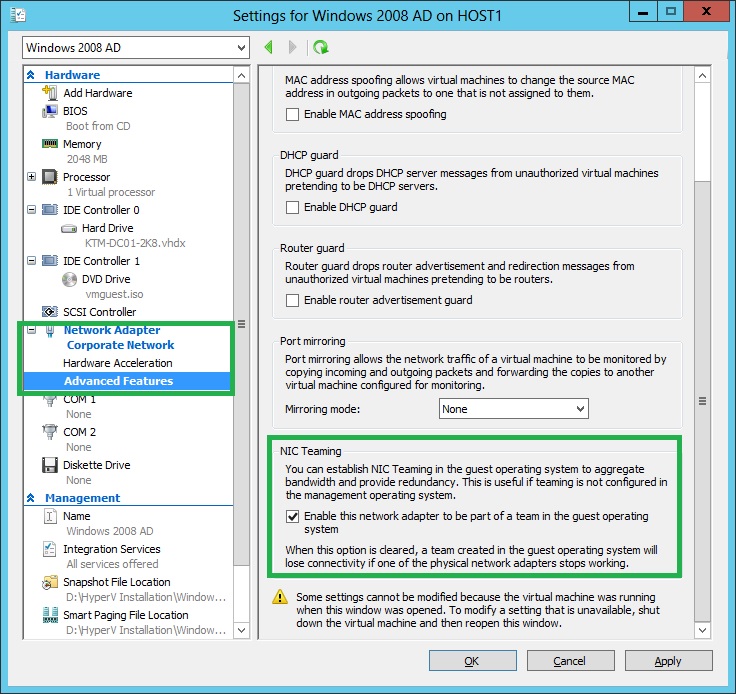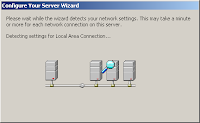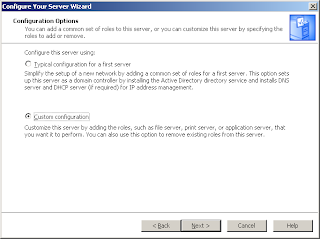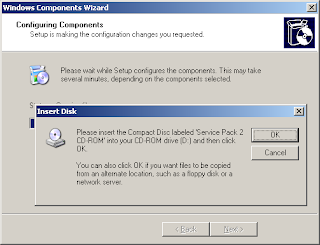Now, launch the installation. The Microsoft Office SharePoint Server 2007 dialog appears.
After a few moments you may see an error prompt appear.
When you then go to IIS Manager and attempt to make the configuration as
directed you may not see the ASP.NET v2.0 item listed at all.
This problem may occur when installing IIS after installing .NET
packages. This problem is easily resolved. Open a command prompt and
then navigate to the .NET 2.0 directory. This will be:
C:\WINDOWS\Microsoft.NET\Framework\v2.0.50727. Enter the following command:
aspnet_regiis -i
This will take only a few moments
After it completes return to IIS Manager and verify that the ASP.NET
v2.0 item is listed. By default running this command also sets the
status to
Allow.
Relaunch the SharePoint 2007 installation. The Microsoft Office SharePoint Server 2007 dialog appears.
After a few moments the Enter your Product Key page appears.
Enter your product key and then click
Continue. The
License Terms page appears.
Check the acceptance option and then click
Continue. The
Choose the installation you want page appears.
Click the
Advanced button. The
Server Type configuration page appears.
Select the
Complete option; and select where you want the application and data files stored and then click
Install Now. An installation progress meter appears.
Depending on your system this approximately 5 minutes. On completion
you will be prompted to launch the SharePoint Products and Technologies
wizard.
This completes installation tasks. Next you will perform configuration.
Phase 3: Configuration of SharePoint 2007 (30 minutes)
The Configuration Wizard can be run at any time post installation. For
this procedure we'll proceed directly into configuration. Make sure the
option to launch the configuration wizard has been selected and then
click Close. The Microsoft Office SharePoint Server 2007 installation
wizard closes and for a few moments nothing will seem to happen. A few
moments later the
SharePoint Products and Technologies Configuration Wizard dialog appears.
Click
Next. A warning prompt appears.
CLick
Yes. The warning prompt closes and the
Connect to a server farm page appears.
For a first-time installation select the
No I want to create a new server farm option and then click
Next.
The SQL Server instance is located at:
2003K1\SQLEXPRESS. For the purposes of this procedure, I created a domain user specifically for this SharePoint instance,
corp\spservice.
Click
Next. The
Configure SharePoint Central Administration Web Application page appears.
Select a specific port or accept the default, and then click
Next.
Click
Next again. This launches the configuration wizard.
Configuration last approximately 5-10 minutes. When it is completed the Configuration Successful page appears.
This completes installation and configuration of SharePoint 2007 on
Windows Server 2003 R2 Enterprise. For the last and final step, let's
test the installation just to be sure that things work.
Step 4: Testing (5 minutes)
On the
SharePoint Products and Technologies Configuration Wizard dialog click Finish. The dialog closes and then the default browser will open along with a login prompt.
Enter your authentication details and then click OK. You may experience an Internet Explorer warning.
This results from having Internet Explorer Enhanced Security
Configuration enabled. Just click Add and then add the current URL to
the list of trusted sites. You will then be navigated to the SharePoint
2007 Central Administration page.
Congratulations! This completes this procedure.














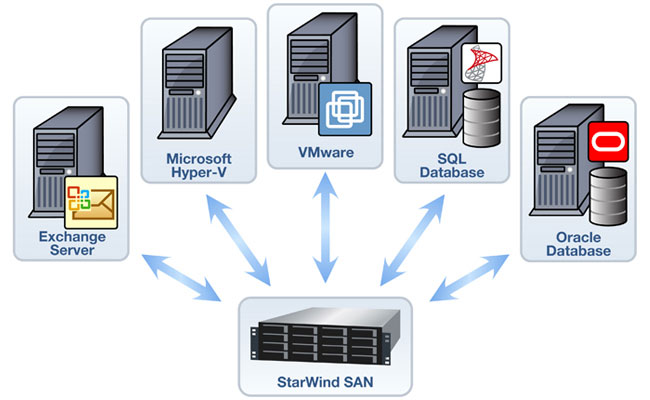


 Teaming solution architecture
Teaming solution architecture









